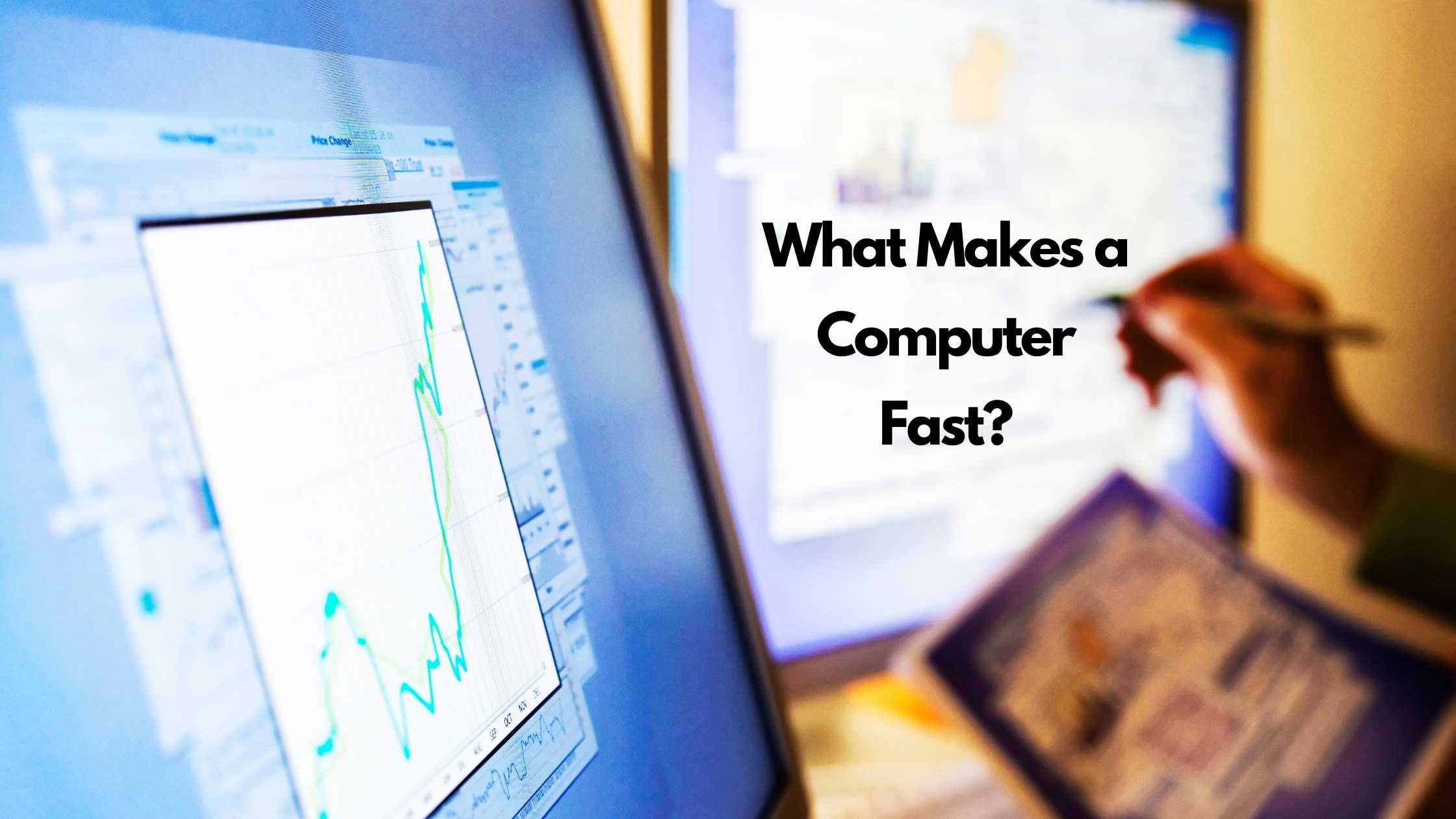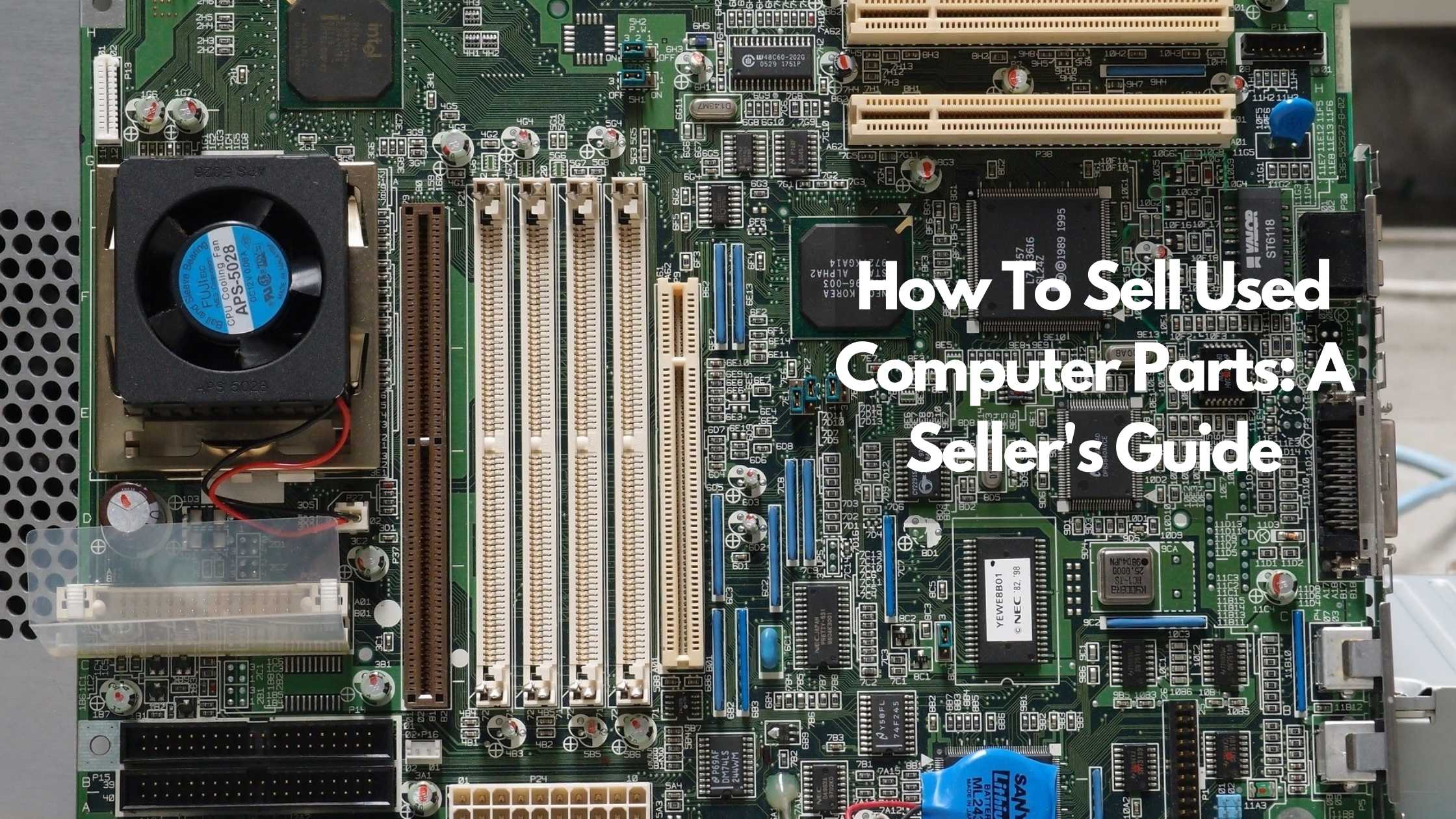
What Makes a Computer Fast?

Whether for browsing, designing, or gaming, a computer that runs smoothly is convenient and essential for your specific needs. This brings us to the question, “What makes a computer fast?” Different components in a computer play different roles to make it fast.
After conducting thorough research, we have put together this article to answer the question in detail. We examine these critical elements and the part they play in making a pc fast. Read on to discover how each of them contributes to a computer’s speedy system.
And if you’re also wondering what your PC is worth, here’s an article explaining how to value your PC.
What makes a computer fast?
A combination of these components makes a computer fast:
- Processing Power – CPU and video card
- Short Term Memory – RAM and cache
- Long-term Memory – hard drive and solid-state drives
- Communication between Systems – BUS
- External Communication – Wi-Fi, internet, and Ethernet
Components That Make A Computer Fast
- Processing Power
It is also referred to as CPU power and has the capability of controlling data. The power is fixed and cannot be reserved. The CPU’s make determines the quality of processing power.
Central Processing Unit (CPU)
CPU is an auto electronic motherboard in a pc that affects the commands of its program. It performs the commands it receives, like the elementary arithmetic, input or output commands, and other actions.
It has three major elements—the Arithmetic Logic Unit (ALU), which executes logic and arithmetic tasks. The Processor Register maintains the info that the CPU uses day by day while the control unit obtains commands from memory and implements them. It does this by channeling the synchronized tasks of the ALU, registers, and additional components.
The rate at which the CPU operates is dependent on the clock speed. A CPU integrates information at that rate. High clock speeds make data processing faster.
The core of the CPU is also significant. Most CPUs today have more than one core. As such, they can develop more than one command.
Numerous cores lead to a better CPU as you can develop more than a single set of instructions at a go. Nevertheless, having more than three cores slackens the pc. This is due to prioritizing commands and synchronizing them in the end. Moreover, cores tend to be expensive.
Video Card
It has other names that are Video Adapter or Graphic card and connects to the motherboard. As hardware, it processes videos and pictures which you can view, for instance, graphics. The rate at which it does the processing determines how fast a computer is.
Further, the video card has different slots, such as the VGA and SVGA, which were previously common. Most slots used today are the HDMI or DVI. It also has an expansion slot through which the card links to the motherboard. The most common slot is the peripheral component interconnect express (PCIe).
- Short Term Memory
As the name suggests, these are places where the computer keeps information temporarily. It has two major components, namely, RAM and cache.
Random Access Memory (RAM)
RAM is where the pc temporarily keeps data. Once you turn it off, you lose the data. It is incredibly fast and ideal for day-to-day operations.
Through RAM, one can access several programs quickly with ease and speed. It further works to retrieve previously accessed data swiftly. More RAM makes your pc work faster.
However, the quantity of RAM for your needs depends on the amount of work you do. It is necessary to clear regularly unused data from your pc to optimize its performance. Most devices have RAM ranging from 8GB up to more than 32GB.
Cache
A cache serves as the CPU’s hardware by lessening the time and energy to retrieve data from the main storage. It saves copies of information from major memory locations often used. The cache is located close to the processor, thus increased accessibility to the processor.
This enhances its efficiency. Because of its location, it is much smaller and utilizes less storage space. However, it produces more performance than major memory. The cache either uses the direct, associative, or set-associative forms of mapping.
- Long-term Memory
Unlike short-term memory, long-term memory allows the computer to store information permanently.
Hard Drive (HD)
As a permanent data storage device, it is embedded on a computer’s motherboard. Most hard drives use platters to store information and have more than a single platter on which a magnetic field writes data. As the platters rotate through the magnetic fields, data is written over them.
Data like a user’s personal documents, operation systems, and installed software are usually kept in the HD. It makes the hard drive vital for the functioning of your computer. As technological advances increase, the magnitude of hard drives increases, leading to more storage space.
You may expand your storage space through the use of external hard drives. These serve to back up your data. They are usually in an enclosure to protect them. To access information on them, you use a USB port on your computer.
Solid-State Drives (SSD)
The solid-state drives are progressively taking the place of hard drives due to their increased efficiency. They use a chip known as the NAND flash memory. SSDs possess higher access speeds that enable the operating system to function speedily.
They also employ flash memory to reserve data making them highly reliable. Their energy consumption is less in comparison to that of a traditional hard drive. This saves your PC’s battery life.
Due to the flash memory, there is hardly any noise produced. SSDs are generally more expensive than hard drives. Because of this, it is best to supplement their usage with the hard drive as secondary storage.
Solid State Drives are faster than magnetic Hard Drives. However, if an SSD were ever to fail, your information would be lost forever. Why because there wouldn’t be any form of information recovery from these compared to traditional magnetic hard drives.
- Communication between Systems
Communication between systems is how two or more computers or components within a computer transfer commands and information.
Bus
The computer bus helps the different parts of the PC to communicate. It is an electrical directing path wherein data is conveyed in any digital device. The bus consists of a set of conventional wires on the exterior of a silicon chip.
The number of wires in the bus determines the amount of data transferred as each wire only transfers a bit. Its speed and its effectiveness are determined by the bandwidth of a computer.
A computer contains several buses charged with different roles.
- Data Bus: permits the consistent flow of information between the CPU and the RAM. It is a two-way path.
- Address Bus: conveys information on the specific data location in the memory. It is a one-way path.
- Control Bus: conveys the control alerts, ensuring the smooth flow of everything from place to place.
The PC’s bus serves in sharing data between its different components or connected computers. It also transfers information from different points in the memory as it has an address line. A bus further provides power to the connected peripherals.
- External Communication
This entails the transmission of data to and from external sources.
Wi-Fi
Wi-Fi is a wireless network connection that uses radio waves. A computer’s wireless device converts data to radio signals then conveys it using an antenna. The reverse process is also true.
The efficacy of your computer can vary depending on different factors.
If more devices link to your router, and many people use the network, your computer will be slow. If you are operating different software at a go, it affects your speed.
Ethernet
An Ethernet network has a network interface card (NIC) connected to every PC or desktop. There is a cable connected to the card with its wires warped to prevent electromagnetic intrusion. The Ethernet connects at speeds ranging from 10mbps to 10,000mbps.
When compared with Wi-Fi, Ethernets are more stable and faster. The only setback is the need to connect cables to access it. Even so, it is safer for multiple users.
Internet
It allows access to services like emailing and the World Wide Web through computers or other devices. The type of internet plan one chooses greatly affects the speed at which your computer operates. If your choice offers more Mbps, then you will operate at a higher speed.
You can access the internet using a modem or internet cable. Based on the choice you make and your choice of internet service providers, you can enjoy optimal speed.
How to make your computer fast
Establish limited resource parts in your device and enhance them. By resource, we mean any of the components in the above section. Enhancing means increasing or doing away with processes using the resources.
For example, use the Task Manager in Windows to see your system’s status and discover what operations are running. The fully utilized operations could be the reason the computer is lagging. Make the following adjustments to increase your PC’s speed:
- Find out the amount of space the hard disk has: it should have at least 15% free. If space is used up, delete some of your programs and data.
- Scan for viruses: They may sneak into your device as you browse and cause issues. Checking for them may increase your PC’s speed.
- Shut unused tabs: and restart the browser to increase the PC’s speed
- Back up data: to release space on your RAM and operating system.
- Check RAM space: if your pc contains many programs, processes huge files, or performs numerous actions simultaneously, your RAM may be inadequate. Consider increasing it.
- Rearrange the desktop icons: Sort them into folders to clean up the background. The folders will free up RAM space.
- Remove unnecessary programs
- Restore disk permissions: to allow you to run basic operations smoothly.
- Alter the power plan: switch to a different plan to make it faster.
- Stop unwanted programs from initializing: it does affect your computer’s speed.
- Restart your pc: do so each week to refresh the memory and install updates.
- Erase internet-browsing records: cache slows down a computer because of the many files it accumulates over time. Deleting releases this space making your pc faster.
- Delete files you no longer need: it could be old programs or temporary files.
- Check your browser: switch browsers if the current one has a slow loading speed.
- Clean out the recycling bin: this deletes files permanently, which releases more space.
How to tell if a computer is fast
The processor’s speed and amount of storage space affect how fast the computer runs applications. Monitoring its performance will tell you if it is fast or not. Check your pc by taking a closer look at the OS information.
For Windows, press the start button. Choose “Control panel”. Choose the “System and Security” option. Finally, choose “General”. You will find information on the type and speed of the processor the device has. It will also show the amount of memory and what operating system your device uses.
Conclusion
A computer is a necessary tool for our everyday life. A fast one makes life bearable as it increases efficiency and convenience. The information here sheds light on what makes a pc fast.
Having the best components detailed in the sections above in conjunction with the newest software and OS will improve your computer’s speed. Do not let your device inconvenience you anymore by slowing down operations. Check the aforementioned components and perform a DIY first aid even if you are not a techie.
Now, if you want to sell your old computers, consider listing them on Sheepbuy. Sellers on this platform aren’t charged a commission on sales, and if you sign up to our free basic tier, you can have up to three active listings at any given time, free of charge. If you’re planning to sell a higher volume, consider one of our paid tiers. Find out more about our packages here.
TRENDING


Online Arbitrage for Beginners (Step-by-Step Guide)

17 Types of Arbitrage Strategies to Turn a Profit

Is Retail Arbitrage Legal?

How to Turn Textbook Arbitrage into a Business for Profit

How Can You Tell if a Book is a First Edition?

What to Do With Your Jigsaw Puzzle When Finished?


